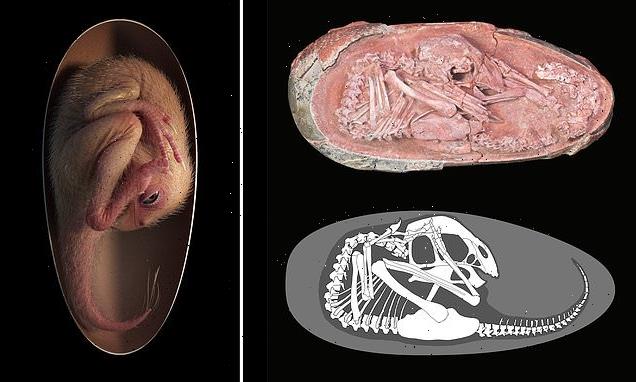Microplastics can travel across CONTINENTS: Scientists discover fragments in ‘pristine’ Pyrenees mountain air – 2,800 miles from their source
- Tiny particles of plastic pollution were originally produced in Africa or America
- The microplastic was 9,500ft in the pristine atmosphere above the Pyrenees
- This suggests these particles are able to travel across oceans and continents
Microplastics are able to travel across continents, according to scientists, who found them in the pristine Pyrenees mountain air, 2,800 miles from their source.
These tiny particles of plastic pollution were originally produced in Africa and add to evidence microplastics have reached everywhere on Earth – from Antarctica to the North Pole.
The microplastic pollution crossed thousands of miles of continent and ocean, according to the team from the University of Birmingham.
Previous studies suggested plastic particles were transported at ‘regional scales’, but the new study suggests they cross continents in the Earth’s atmosphere.
It is still unclear how widespread this phenomenon is, according to the team.
Microplastics are able to travel across continents, according to scientists, who found them in the pristine Pyrenees mountain air, 2,800 miles from their source
These tiny particles of plastic pollution were originally produced in Africa and add to evidence microplastics have reached everywhere on Earth – from Antarctica to the North Pole
Microplastics can cause cell death and allergic reactions in humans
Microplastic particles can cause cell death, cellular wall damage and allergic reactions in humans – at levels ingested by people via their food, a study has warned.
Researchers led from the University of Hull reviewed 17 previous studies on the toxicological impacts of microplastics on human cells in a laboratory setting.
The team then compared the levels of microplastics required to cause cellular damage with those taken in via drinking water, seafood and table salt.
The team found that the extent of the cellular damage increased with the amount of microplastics absorbed, while irregularly-shaped particles were more harmful.
However, the experts warned, the health impact on an actual human body remains unclear, as it is not known how long microplastics remain in our systems.
The study, by Steve Allen and colleagues from the University of Birmingham, involved collecting atmospheric microplastics from high altitude locations.
They then worked to track their original source to see how far they journeyed.
Air containing the particles was found to have travelled an average of 2,800 miles in the week up to the point it arrived at the observatory.
The particles travelled from the west and south, over the Atlantic Ocean and Mediterranean Sea to reach the thin air above the Pyrenees.
As well as North Africa, the researchers say particles may also have arrived from North America and western Europe.
This suggests a ‘trans-continental and trans-oceanic transport through the free troposphere’, which is the layer of atmosphere above the clouds.
This means that even regions with little to no local plastic usage could be impacted by microplastic sources continents away.
The pollution included bits of polystyrene and other plastic, most of which comes predominantly from packaging.
Dr Allen said: ‘Previously detected in rivers, oceans, and snow, microplastic has now been found in the high-altitude air surrounding the Pic du Midi.’
The astronomical observatory is at the summit of the mountain and sits almost 9,500 feet above sea level.
For this study, the team analysed more than 10,000 cubic metres of air.
They calculated a microplastic concentration of around one particle in every four.
Dr Allen says it doesn’t impose a direct threat, but regardless, its presence is far from sources of pollution, which is ‘nonetheless surprising’.
‘It offers an explanation for their presence at the poles, on Mount Everest, or in other remote regions of our planet,’ he said.
The particles – less than five millimetres long – are invisible to the naked eye, with governments and campaigners focused on reducing proliferation.
They are driven mainly by concern for wildlife and worries over unsightly drinks bottles or abandoned fishing nets on beaches.
The microplastic pollution crossed thousands of miles of continent and ocean, according to the team from the University of Birmingham
More than 4 MILLION pounds of microplastic is stored in coral
Microplastics are a danger to ocean life, as the pollution carries traces of metals and toxic chemicals and a new study reveals their impact on coral.
A team of scientist from the University Giessen in Germany found up to four million pounds of microplastics may be stored in coral skeletons every year.
And the research determined nearly three percent of the toxic pollutants are estimated to be in the shallow, tropical waters where corals thrive.
Corals consume microplastics thinking they are food, which can cause bleaching and tissue necrosis in the living organisms.
Plastic bag usage has been cut in many parts of the world, and various projects are exploring how to gather up the floating waste in oceans.
But little has yet been done to deal with the ‘hidden risks’ of polluting particles humans cannot see – known as microplastics.
They also come from cleaning and cosmetic products, tyres and fibres shed from tumble driers and washing machines.
Microplastics are in every environmental system investigated to date – including record-breaking quantities in river sediments in the UK.
Finding them in the remote air over the Pyrenees came as a surprise to Dr Allen, who said the region is normally considered pristine.
‘The emerging threat of atmospheric microplastic pollution has prompted researchers to study areas previously considered beyond the reach of plastic.
‘Investigating the range of transport is key to understanding the global extent of this problem,’ Dr Allen said.
Their occurrence in the ‘free troposphere’ – the lowest region of Earth’s atmosphere – shows they can travel further than previously feared.
‘It also indicates a potential risk to environmental and human health due to absorbed chemicals and bacteria or virus being transported long distances to pristine locations and vulnerable areas,’ said Dr Allen.
The findings have been published in the journal Nature Communications.
WHAT FURTHER RESEARCH IS NEEDED TO ASSESS THE SPREAD AND IMPACT OF MICROPLASTICS?
The World Health Organisation’s 2019 report ‘Microplastics in Drinking Water’ outlined numerous areas for future research that could shed light on how far spread the problem of microplastic pollution is, how it may impact human health and what can be done to stop these particles from entering our water supplies.
How widespread are microplastics?
The following research would clarify the occurrence of microplastics in drinking-water and freshwater sources:
- More data are needed on the occurrence of microplastics in drinking-water to assess human exposure from drinking-water adequately.
- Studies on occurrence of microplastics must use quality-assured methods to determine numbers, shapes, sizes, and composition of the particles found. They should identify whether the microplastics are coming from the freshwater environment or from the abstraction, treatment, distribution or bottling of drinking-water. Initially, this research should focus on drinking-water thought to be most at risk of particulate contamination.
- Drinking-water studies would be usefully supplemented by better data on fresh water that enable the freshwater inputs to be quantified and the major sources identified. This may require the development of reliable methods to track origins and identify sources.
- A set of standard methods is needed for sampling and analysing microplastics in drinking-water and fresh water.
- There is a significant knowledge gap in the understanding of nanoplastics in the aquatic environment. A first step to address this gap is to develop standard methods for sampling and analysing nanoplastics.
What are the health implications of microplastics?
Although water treatment can be effective in removing particles, there is limited data specific to microplastics. To support human health risk assessment and management options, the following data gaps related to water treatment need to be addressed:
- More research is needed to understand the fate of microplastics across different wastewater and drinking-water treatment processes (such as clarification processes and oxidation) under different operational circumstances, including optimal and sub-optimal operation and the influence of particle size, shape and chemical composition on removal efficacy.
- There is a need to better understand particle composition pre- and post-water treatment, including in distribution systems. The role of microplastic breakdown and abrasion in water treatment systems, as well as the microplastic contribution from the processes themselves should be considered.
- More knowledge is needed to understand the presence and removal of nanoplastic particles in water and wastewater treatment processes once standard methods for nanoplastics are available.
- There is a need to better understand the relationships between turbidity (and particle counts) and microplastic concentrations throughout the treatment processes.
- Research is needed to understand the significance of the potential return of microplastics to the environment from sludge and other treatment waste streams.
To better understand microplastic-associated biofilms and their significance, the following research could be carried out:
- Further studies could be conducted on the factors that influence the composition and potential specificity of microplastic-associated biofilms.
- Studies could also consider the factors influencing biofilm formation on plastic surfaces, including microplastics, and how these factors vary for different plastic materials, and what organisms more commonly bind to plastic surfaces in freshwater systems.
- Research could be carried out to better understand the capacity of microplastics to transport pathogenic bacteria longer distances downstream, the rate of degradation in freshwater systems and the relative abundance and transport capacity of microplastics compared with other particles.
- Research could consider the risk of horizontal transfer of antimicrobial resistance genes in plastisphere microorganisms compared to other biofilms, such as those found in WWTPs.
Can water treatment stop microplastics entering our water supplies?
Although water treatment can be effective in removing particles, there is limited data specific to microplastics. To support human health risk assessment and management options, the following data gaps related to water treatment need to be addressed:
- More research is needed to understand the fate of microplastics across different wastewater and drinking-water treatment processes (such as clarification processes and oxidation) under different operational circumstances, including optimal and sub-optimal operation and the influence of particle size, shape and chemical composition on removal efficacy.
- There is a need to better understand particle composition pre- and post-water treatment, including in distribution systems. The role of microplastic breakdown and abrasion in water treatment systems, as well as the microplastic contribution from the processes themselves should be considered.
- More knowledge is needed to understand the presence and removal of nanoplastic particles in water and wastewater treatment processes once standard methods for nanoplastics are available.
- There is a need to better understand the relationships between turbidity (and particle counts) and microplastic concentrations throughout the treatment processes.
- Research is needed to understand the significance of the potential return of microplastics to the environment from sludge and other treatment waste streams.
Source: Read Full Article





